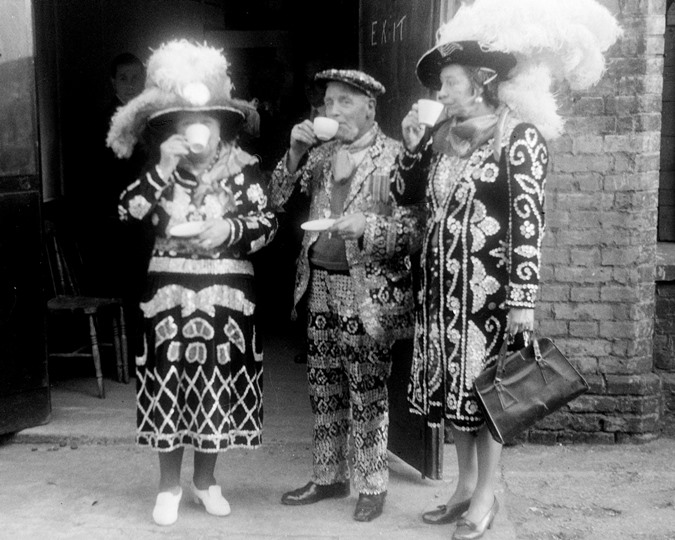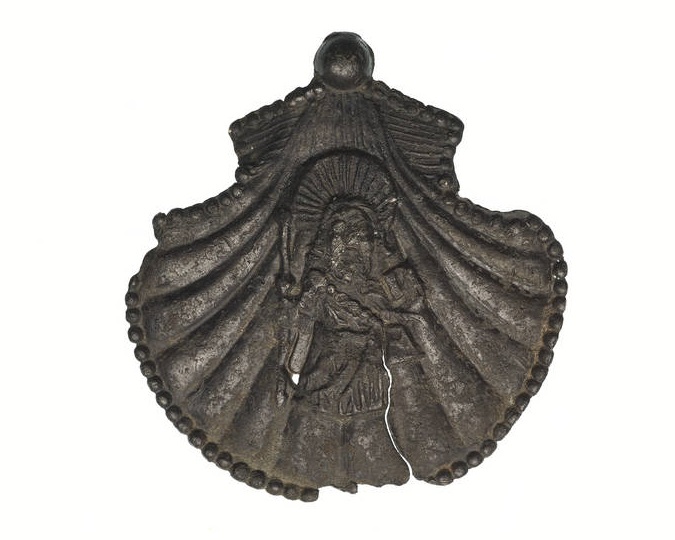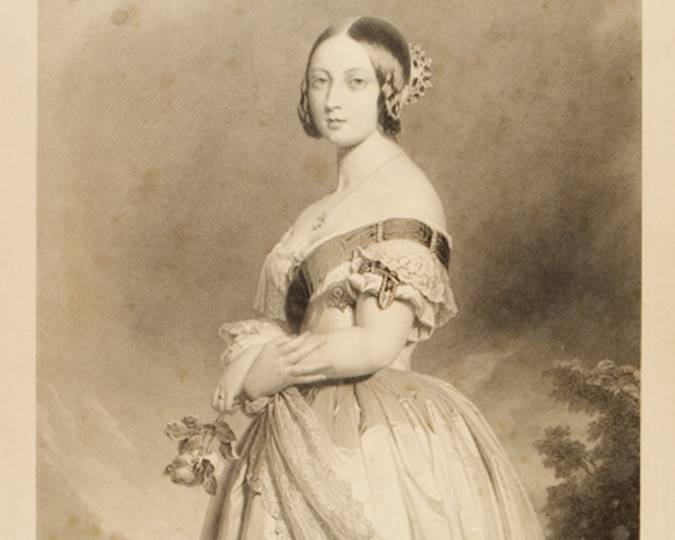What’s your favourite object connected to women’s history? One of ours is a Bow Bear. The Museum of London has been working with the East End Women’s Museum to uncover the story of the Ealontoys teddy bear in the latter’s collection, and trace the beginnings of the East London Federation of the Suffragettes.
It’s not often that the origin of a child’s toy — something as cute as a teddy bear — has its roots in the grim reality of a world war, as well as an inspiring revolution for women’s emancipation. That is exactly why, the story of how the Ealontoys Bow Bear stuffed toy came to be is quite unique.
The history of Ealontoys starts in 1914, originating in the Votes for Women movement, the First World War and socialist politics. For a cute teddy bear, that’s quite an impressive legacy connection! While the actual number is not known, it’s safe to say that not many such toys from the factory survive.
The toy factory

A 1907 teddy bear from the Steiff Company in Germany. (ID no.: 55.46/1)
The East London Toy Factory was set up in October 1914 at “45 Norman Road” (now Grove) to provide work for women when the First World War began. It was started by Sylvia Pankhurst (daughter of Emmeline Pankhurst and sister to Christabel Pankhurst), the founder of the East London Federation of the Suffragettes (ELFS), with the aim to provide well-paid jobs for women by manufacturing goods that were unavailable, hard to get hold of, or needed to be imported at the time. Many popular toys such as teddy bears were manufactured in Germany, but due to the war, shipments had stopped.
The factory initially produced wooden toys, using wood donated by George Lansbury — Sylvia’s friend, a strong suffragette supporter and a politician, who had resigned from his seat to fight elections based on the issue of women’s suffrage! (Unfortunately, he lost.) The factory later expanded to produce soft toys (like the bear in the East End Women’s Museum’s collection) as well as porcelain-faced dolls, shares Rosemary Taylor in her book In Letters of Gold.
A leaflet produced by the ELFS, which is part of the Museum of London’s extensive collection on Suffragettes, lists “rag dolls, china-headed and wax-headed ones of original and artistic designs, at various prices; also dolls’ clothes, dolls’ furniture and flat wooden toys” among the items for sale. While Sylvia encouraged the women to use their own imagination for designing the toys, there were also suggestions from many of her women artist friends from the time of her studies at Manchester School of Art and then the Royal College of Art. Sculptors were also appointed to create the doll moulds and painters to create visually exciting designs. Even the famous artist Walter Crane sent her some pictures as suggestions for new toys.
Ahead of its time, the East London Toy Factory produced dolls representing different races, such as Asian and African dolls.
All was not just play!
The first batch of toys was sold at Selfridges department store, which supported the suffragette campaign. It’s said that Sylvia herself took a taxi full of toys to Selfridges, and convinced the owner Gordon Selfridge to stock them.

A banner made by the West Ham branch of the WSPU. The trumpeting angel design in the central medallion was adapted from Sylvia Pankhurst's 'angel of freedom' motif, as is visible in the tea set with the Suffragette logo (right). (ID no.: 50.82/1237; 61.168)
In order to offer women a fair wage for their work, the factory paid higher rates than other local manufacturers. The women were paid £1 a week — the average man’s minimum wage. At the time, the highest paid female workers received 15 shillings per week but the lowest were paid as little as 3 shillings a week. This meant that at least initially, the factory was not a huge commercial success. However, there was a lot of support for the initiative and the factory remained in business at Norman Road until 1934. After which, it relocated to King’s Cross. It continued producing toys there under the Ealontoys label until 1943, when bombing raids in the area during WWII caused its closure.
For the greater good
Soon after the toy factory was started, Sylvia also opened a nursery in Norman Road as a crèche for the mothers working there. The women could leave their children for the whole day at a cost of 3d, which included food. The crèche soon filled up, and they had to search for a bigger space.
In 1914, they opened a large premises at “438, Old Ford Road”, in a disused pub The Gunmaker’s Arms and renamed it the Mother’s Arms. The first floor housed a school that was run using the Montessori Method, while the ground floor bar was used to store the medicines and children’s clothes.

Postcard with a photograph of Sylvia Pankhurst (1882-1960) playing with a child who is standing on a table in the Mother's Arms, 1913–16. (ID no.: 50.82/871a)
During WWI, the ELFS started a number of initiatives to support the women in East End London. This included a garment factory, a boot factory, clothing stalls selling old and new clothes. At their headquarters (400 Old Ford Road), the Women’s Hall, they also opened the first of several Cost Price Restaurants (which was recreated as part of a 2018 exhibition in Tower Hamlets Local History Library and Archives), which served balanced and nutritious meals for just a penny for children, 2p for adults and free for those who could not afford anything.
“I’ll never forget those dinners,” recalled one of her customers. “Meat pudding, greens and potatoes with a slice of spotted dog — for a penny.”
— Shirley Harrison (Sylvia Pankhurst: Citizen of the World)
Not everyone was apparently as complimentary, with some protesting at being made to eat “that muck” — potatoes served with their skins on (believed to be highly nutritious) and plenty of dried beans, writes Rosemary Taylor, In Letters of Gold.
Working to make the government understand the difficulties of food poverty, the ELFS took a deputation to show ministers evidence of reduced family budgets. Sylvia’s persistence resulted in a milk distribution centre for babies, with a clinic alongside it where a doctor would treat patients without charge. This was long before the National Health Service was launched in 1948! Some years later, Sylvia felt that the campaign for suffrage affected working women and men, and in March 1916, ELFS was renamed to Workers Suffrage Federation, calling for universal suffrage for everyone over 21.
But, why did Sylvia Pankhurst form a separate Suffragette organisation with the ELFS, and distance herself from the more well-known Women’s Social and Political Union (WSPU), led by her mother and sister?
The birth of ELFS

Sylivia Pankhurst addressing a crowd outside the headquarters of the East London Federation of Suffragettes, Old Ford Road, Bow, 1912. (ID no.: NN22843)
Sylvia had originally been an active member of the WSPU, but unlike Emmeline and Christabel, she felt the Suffrage movement should encourage greater participation from working-class women. This came from her extensive work in London’s East End. Later, when the World War started, Emmeline and Christabel encouraged Suffragettes to support the war effort, while Sylvia — who was a pacifist — was against England joining the war. This created a further rift in the Pankhurst family, and finally Sylvia separated from the WSPU to form the East London Federation of Suffragettes.

Not many toys with the Ealontoys label are known to have survived. (Courtesy: East End Women’s Museum)
Sylvia and the ELFS, of course, could not stay unaffected by the war, and these initiatives — ranging from the toy and garment factories to the nursery and cost-price restaurants across several locations in East London (Poplar, Bow, etc.) proved to be important centres to make sure the women, children and poor families in the surrounding areas were taken care of. As East End novelist and suffrage supporter Israel Zangwill is famously quoted: “…the hope of the world lies in changing the Gunmaker’s Arms into the Mother’s Arms. I trust out Sylvia’s action will be symbolic of the whole future course of history; for we will not pretend here that we are saving these babies merely that they may grow up to be food for cannon.”
The Bow Bear toy is just one of the few remaining physical reminders of the extraordinary work done by the members of the ELFS for not only women’s suffrage but also society.
With inputs from Shruti Chakraborty, Digital Editor (Content), Museum of London.
The East End Women’s Museum researches and shares the extraordinary and everyday stories of East London women. Through programmes, partnerships and pop-up activities, it works to increase women’s representation and recognition, to challenge gender inequalities, and to build power among women and girls today. It is currently setting up a permanent home in Barking, set to open in the next year.
This partnership was supported using public funding from Arts Council England.










